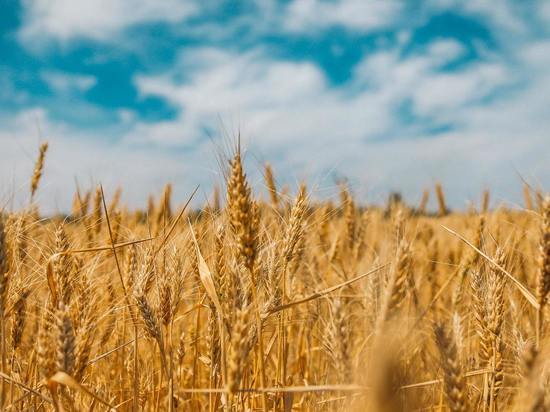The record harvest of Russian wheat provoked a problem: how to export
[ad_1]

Deputy Lisovsky: “If farmers sell grain below cost, many will stop working”
A huge harvest is fraught with big problems. President Putin said that a record 150 million tons of grain could be harvested in Russia this year. The problem is that domestic consumption is much less, and it is not possible to export wheat for sale: exports are limited, and railway tariffs are too high. As a result, the grain may remain in Russia. This oversupply has predictably driven prices down. It turns out that farmers spend money, grow crops, but cannot earn. Sergey Lisovsky, a member of the State Duma Committee on Agrarian Issues, spoke about the current problems of the agro-industrial complex, MK.
– A record high harvest is expected and farmers do not understand what to do with it. How serious is the problem?
– Export, unfortunately, is currently limited. Domestic consumption cannot rise sharply. Together, these factors have led to the fact that feed wheat prices in a number of regions have already fallen below cost and the decline continues. Only in the Kurgan region, a record harvest is more than 2 million tons, and about 700-800 thousand are needed for domestic consumption. It turns out that 1.2-1.3 million grains need to be exported. And here a problem arises: railway tariffs are very high. The situation is similar in many regions of the country. The Ministry of Agriculture of Russia, for example, maintains plans to purchase 3 million tons of grain for the intervention fund. This is very little, with an expected harvest of 150 million tons. It won’t help keep prices down. Many agrarians are turning to the ministry with a request to cancel or reduce export duties so that producers can take as much grain out of the country as possible. And the problem is not only the low price. Russian grain becomes uncompetitive due to the duty. By abolishing the duty, we will give exporters the opportunity to maneuver in price so that they win tenders. But the Ministry of Finance is already so “hooked” on income from duties that it is unable to do so.
-What are the prospects for the villagers?
– Grain does not appear out of nowhere. It is grown, and these are costs. If they are not compensated, the peasants may go bankrupt. But for some reason, the Ministry of Finance considered that last year the farmers earned a lot, and if now they are trading at a loss, they will be able to compensate for it at the expense of last year’s earnings. But it’s not. We do not agree with the government’s cost calculation, as it does not take into account many costs. In addition, we believe that last year’s profit calculation is at least twice as high. If we talk, for example, about the Kurgan region, then there are no large agricultural holdings that could accumulate fat last year and compensate for this year’s losses. Peasants live from harvest to harvest. If now they are forced to sell grain below cost, many will stop working.
What needs to be done to improve the situation?
– The government needs to develop a program to respond to these challenges. On the one hand, a large harvest is great, but on the other hand, the problem of its implementation is very acute. For some reason, the government believes that grain prices will rise, there will be a shortage in the world and our farmers will have the opportunity to export their crops. But this is not an entirely accurate thesis. According to forecasts, yes, in a number of countries the harvest will be lower, but in some countries, on the contrary, the indicators will exceed last year’s. If there is a difference from last year in the world grain balance, it will be insignificant. There will most likely not be a surge in demand for grain in the world.
– The Ministry of Finance allocated 10 billion rubles to stabilize prices. Is this support effective?
-Each peasant should be paid an additional 2,000 rubles for each sold ton of grain. But if 10 billion is allocated, then this will be enough for only 5 million tons, and the harvest – 150 million tons. This money will not solve the problem. In order for the domestic market to need more grain, it is necessary, for example, to increase the number of livestock, but this cannot be done quickly. Moreover, there is a slight annual decline in the number of cattle. It turns out that we cannot artificially increase domestic grain consumption.
[ad_2]
Source link






